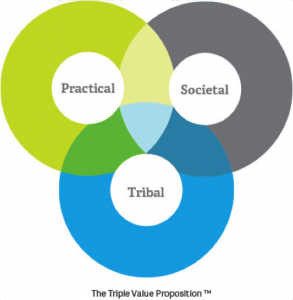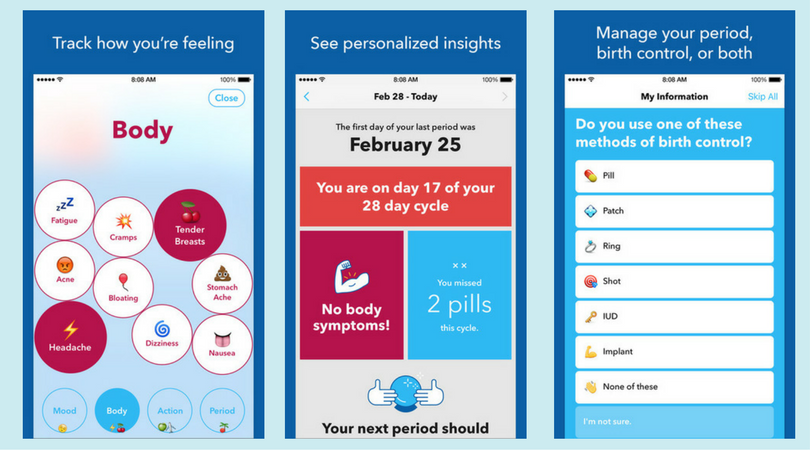I recently sat down with BBMG, a founding B Corp. BBMG is a brand and innovation consultancy dedicated to helping their clients achieve positive social impact through disruptive business solutions.
This small company of 15 people has been making waves in the branding world for the past fifteen years. Some of their recent clients include: Adidas, eBay, Eileen Fisher, Johnson & Johnson, L’Oréal Paris, PepsiCo, and Target. These guys know what they are doing!
This is a two-part article. The first post will focus on three things marketers should be aware of when tackling branding. The second post will review the importance of aspirational consumers in the marketplace.
I was truly inspired after meeting with Business Development Manager, Liz Courtney, and Junior Strategist, Sophia Ingram, in their DUMBO, Brooklyn office. They generously explained three core principles they follow when they help clients.
- Be tuned in to trends and current affairs.
It’s irresponsible for marketers to ignore popular trends and current events. Consumers are more educated and mindful than ever before. They have their phones in their hand and get news in real time. And when the news is important to them, they immediately engage in conversations. It’s foolish for companies to sit on the sidelines and not participate.
BBMG demonstrated how to do this while working on a project with Planned Parenthood to launch their period tracker app, Spot On.
BBMG developed a campaign designed for people to monitor their menstrual cycle: Follow Your Period. “Based on the idea that young women are very digitally savvy and following the news, their favorite celebrities, and friends; following your body and period should be just as easy, and fun,” Courtney said.
The app does more than nod to social media trends through style choices and use of emojis. The app design acknowledges a very important topic: gender. Spot On is not pink or girly and there are no women twirling in white dresses on the beach.
BBMG consciously avoided gender stereotypes. “We don’t refer to the users as just women. We refer to them as people with periods. It’s very gender neutral, we wanted to be very inclusive and aware,” Courtney said.
A year ago, that decision might not have been so significant. However, BBMG was tuned into the social conversation around gender and Planned Parenthood’s app was more impactful because of it.
- Choose a company’s cause carefully.
Impact branding is not a simple formula. Just because one campaign works for a company does not mean it can (or should) be used by another company. It is important for branding firms and marketers to find a cause that makes sense for a company. For example, gender equality and inclusiveness worked for Planned Parenthood, but wouldn’t necessarily match another one of BBMG’s clients, like Origins.
Origins was a pioneer in the makeup industry because it was one of the first natural skin care lines. In the past few years, natural skin care products have become more in demand, making it harder for Origins to stand out.
 So, how do you take an already sustainable, force-for-good company to the next level? You match them with the right cause.
So, how do you take an already sustainable, force-for-good company to the next level? You match them with the right cause.
Origin partnered with American Forests’ Global ReLeaf program and has planted over half a million trees in the past decade. While this is amazing work, having a tree planted half-way around the world for each product purchased seemed too far removed from the user.
BBMG is working with Origins to find a more direct way to make a social impact that affects consumers.
- Understand why people buy what they buy.
Inspired by the triple bottom line, BBMG has developed a methodology to help any organization embody purpose. It’s called the Triple Value Proposition. The 3VP allows companies to understand the practical, societal, and tribal benefits of their product or services.
BBMG’s website defines it perfectly: “It’s no longer about asking consumers to buy something. It’s about inspiring them to be something, helping them create their best selves and a better world for their children.”
The 3VP allows marketers to get into the mindset of conscious buyers by understanding what aspirational consumers value.
- Practical: Does this product function in the way that I want it to?
- Tribal: How does buying this product, or being a part of this brand align me with other people like me?
- Societal: What does this product do for me and what does it do for the world?
Consumers are voting with their wallet for the world they want to live in. The 3VP allows marketers and companies to take that into consideration.
All in all, companies need to understand their customer’s motivations. But also, marketers need to understand their client’s motivation. Courtney and Ingram stressed the importance of understanding the difference between “doing good” branding and marketing, and greenwashing. Companies can’t get away with insincere sustainability marketing anymore.
Ingram summarized how marketers should approach social impact marketing. “Just think about brand and purpose as one in the same. Consumers are educated, aware, and they care!”
If companies consider this, they might just win consumers’ votes.

 |
|



